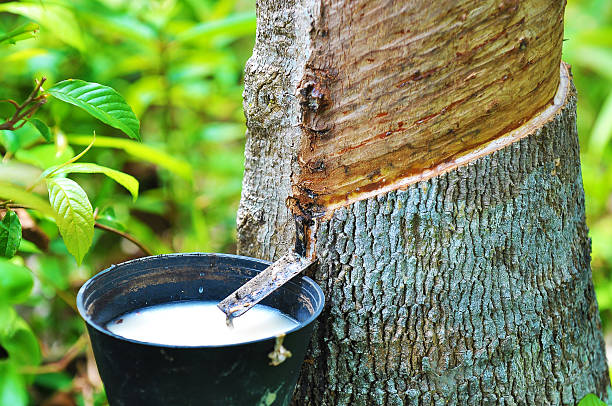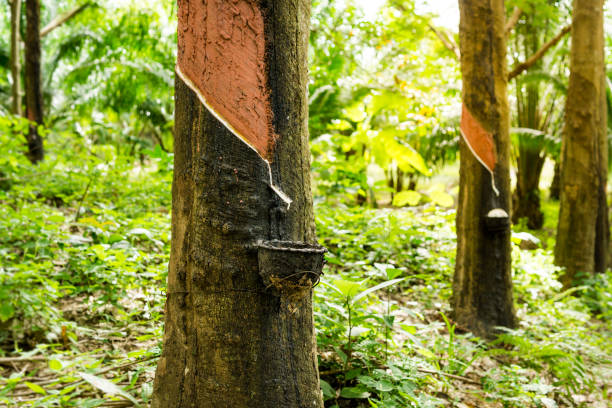Are you intrigued by the idea of venturing into the rubber export business in Nigeria? The rubber industry in this African nation offers a world of possibilities, but it’s not without its share of challenges. In this comprehensive guide, we’ll delve into the exciting yet complex world of rubber export in Nigeria. Whether you’re a seasoned exporter or a budding entrepreneur, this article will provide valuable insights into the challenges and opportunities that lie ahead.
The Rubber Industry in Nigeria: A Brief Overview

Before we dive into the specifics, let’s take a quick look at the rubber industry’s landscape in Nigeria. Nigeria is among the top rubber-producing countries in Africa, with vast plantations across the nation. Rubber production is predominantly found in the southern and southwestern regions of Nigeria, thanks to the favorable climate conditions.
The primary rubber product exported from Nigeria is natural rubber latex. This valuable resource is used in various industries, including tire manufacturing, automotive, healthcare, and fashion. With increasing global demand for rubber, Nigeria’s potential for growth in this sector is substantial.
Also, Read>>>>The Ultimate Step by Step Guide to Starting a Profitable Soybean Export Business from Nigeria
Opportunities in Nigeria’s Rubber Export Market
1. Abundant Natural Resources:
Nigeria boasts an abundance of rubber plantations, making it a reliable source of natural rubber latex. This availability presents a significant opportunity for exporters looking to tap into the international rubber market.
2. Rising Global Demand:
The global demand for rubber continues to grow steadily. As industries like automotive, construction, and healthcare expand, the need for rubber products increases, creating a favorable market for Nigerian exporters.
3. Diversification:
Beyond latex, there are opportunities to explore value-added rubber products such as gloves, rubber bands, and footwear. Diversifying your product range can open up new markets and revenue streams.
4. Government Initiatives:
The Nigerian government has implemented policies to support the growth of the rubber industry, offering incentives and support to exporters. Staying informed about these policies can be advantageous for your export business.
Challenges in Nigeria’s Rubber Export Market

1. Quality Control:
Maintaining consistent quality in rubber production can be a challenge. Ensuring that your rubber meets international standards is crucial to building trust with global buyers.
2. Price Volatility:
Rubber prices are subject to fluctuations in the global market, which can impact your profitability. It’s essential to have a robust pricing strategy and risk management in place.
3. Infrastructure and Logistics:
Nigeria’s infrastructure and transportation systems can be less than ideal, leading to delays and increased costs in the export process. Planning and investing in efficient logistics are vital.
4. Competition:
The rubber export market is competitive, with several countries vying for market share. To succeed, you must differentiate your products and build strong relationships with buyers.
Also, Read>>>>The Ultimate Step by Step Guide to Starting a Profitable Soybean Export Business from Nigeria
Strategies for Success
Navigating the challenges and leveraging the opportunities in Nigeria’s rubber export market requires careful planning and execution. Here are some strategies to help you succeed:
1. Quality Assurance:
Invest in quality control processes to ensure your rubber products meet international standards consistently. This will enhance your reputation and attract more buyers.
2. Market Research:
Conduct thorough market research to identify target markets with high demand for rubber products. Tailor your export strategy to cater to the specific needs of these markets.
3. Diversification:
Explore the potential for producing value-added rubber products to broaden your product range and reach a wider customer base.
4. Government Engagement:
Stay informed about government policies and initiatives that support the rubber industry. Take advantage of any incentives or support programs available to exporters.
5. Logistics Optimization:
Work on optimizing your logistics and supply chain to reduce costs and improve efficiency in the export process.
In Conclusion
Navigating the rubber export market in Nigeria comes with its set of challenges, but it also offers promising opportunities for those willing to invest time and effort. By understanding the industry landscape, staying informed about market trends, and implementing sound strategies, you can position your rubber export business for success in Nigeria and beyond.
The potential for growth in Nigeria’s rubber export market is vast, and with the right approach, you can make a significant impact in this thriving industry. Remember that success often comes to those who are well-prepared and adaptable to change. So, roll up your sleeves, embrace the challenges, and embark on your journey into the exciting world of rubber export in Nigeria!
Also, Read>>>>The Ultimate Step by Step Guide to Starting a Profitable Soybean Export Business from Nigeria











